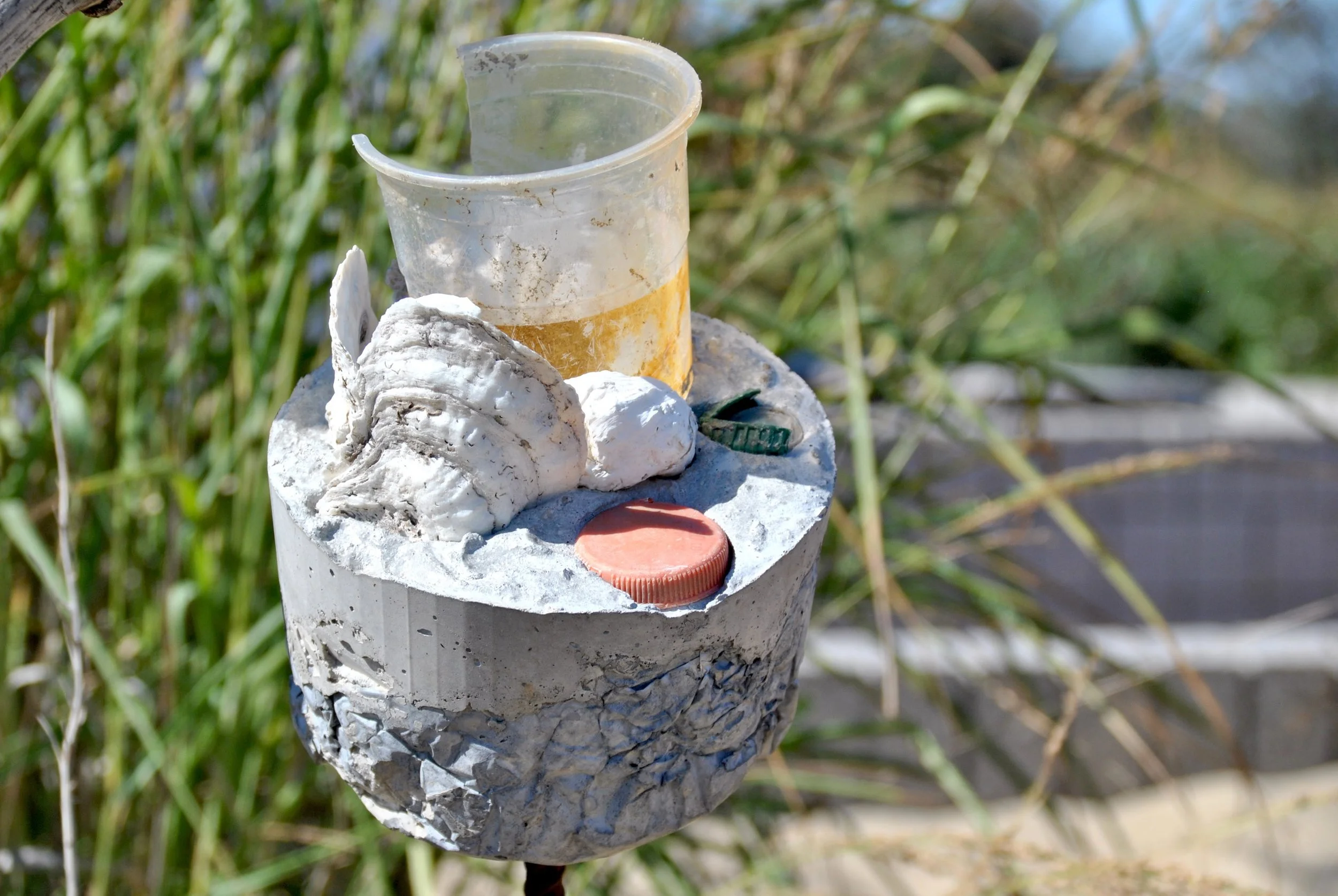









In 2016, I was chosen as one of four artists to be paired with four local environmental organizations for a National Endowment for the Arts grant project on Sandy Hook, New Jersey.
I was paired with the National Oceanic and Atmospheric Administration (NOAA). Each of the artists met with the environmental groups to discuss their programs, barriers to public education, and most pressing local environmental issues. All four organizations noted the massive amounts of marine and coastal non-point source pollution that plagued our shores.
The artists worked with Clean Ocean Action and hundreds of their volunteers over nine months to sort and collect coastal debris to use in four public art installations, located on the beaches of Sandy Hook--a national park, historic landmark, and barrier peninsula.
Shown here, a test sample from my studio out on Sandy Hook. Oyster concrete, handmade from crushing recycled restaurant oyster shells, sand, water, and cement.
My project was fueled from discussions with NOAA about their involvement with New Jersey's first artificial reef system. With the help of the American Littoral Society, I began collecting, cleaning, crushing, and creating concrete from recycled restaurant oyster shells--often embedding coastal pollution into the pieces and using other found debris as molds that rest atop rebar.
The concrete smelled of the ocean and was incredibly durable.
The Oyster Aesthetics project was born and continues today.
Photo Credit: Lisa DeSantis

I became obsessed with crushing oyster shells and pouring the concrete mixture into found debris items--utilizing the negative space of coastal debris.
Kids' sand buckets, industrial buckets, garbage bins, and single-use cups became concrete molds.
Photo Credit: Lisa DeSantis

Straws are abundant on the New Jersey shores, especially during the beach seasons of May through August. Unlike many of the other debris items, straws are a direct point-source pollution item from tourists and beach-goers that come with drinks or purchase them from food trucks and leave their waste behind.

This baseball cap has small barnacles growing underneath the brim--evidence that the brim has been a polluted item in shallow waters for a short amount of time in the environment.

After these pieces were uninstalled from their five-month beach installation site, they were cleaned and placed within a new context--the gallery space.